

This feature is only available to premium members
Checkout our Premium Accounts
Select your Account Type
I'm a Parent Add up to 6 childrenPrimaryLeap has introduced a new interactive learning platform and would like to offer you a completely Free Upgrade.
We understand that you may only want to use our services for worksheets and may not want to upgrade your account.
But if you are interested in trying out our new services then you're just a click away.
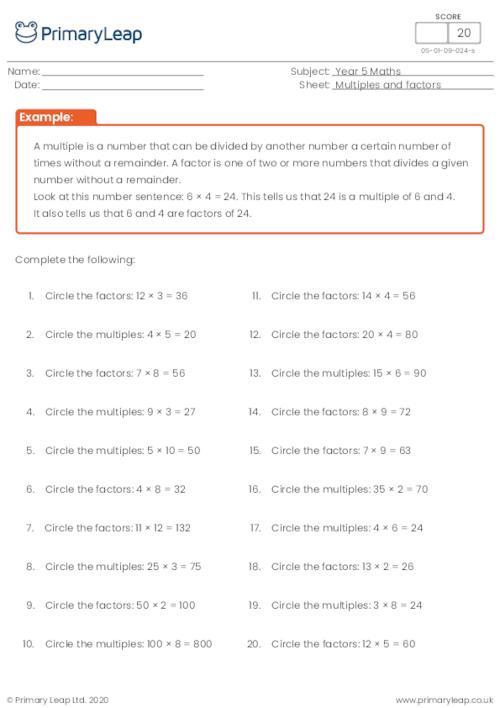
Students identify the multiples and factors of each number sentence.
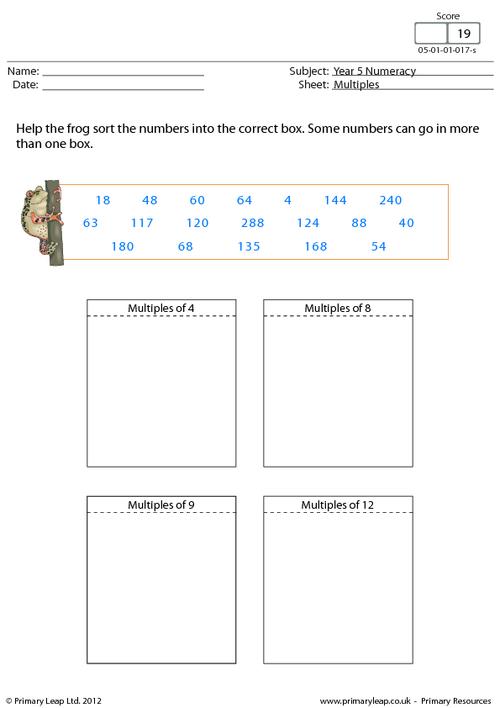
Maths: Multiples - Separate the various multiples and put them in the correct box.

Students are asked to find all the factor pairs of a number.
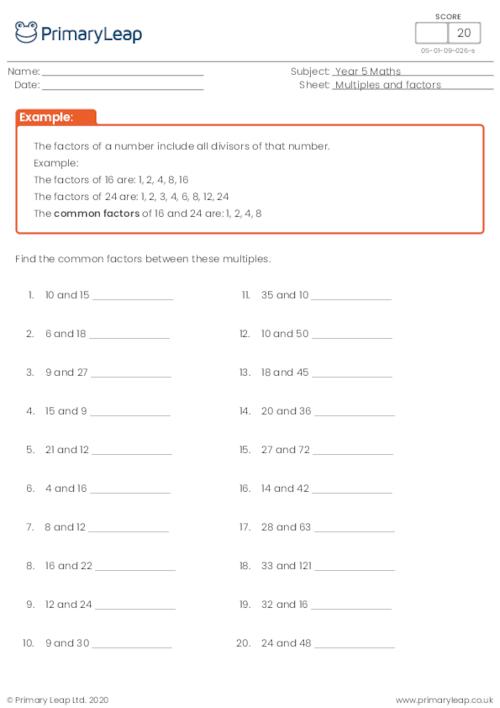
Students are asked to find the common factors of two numbers.
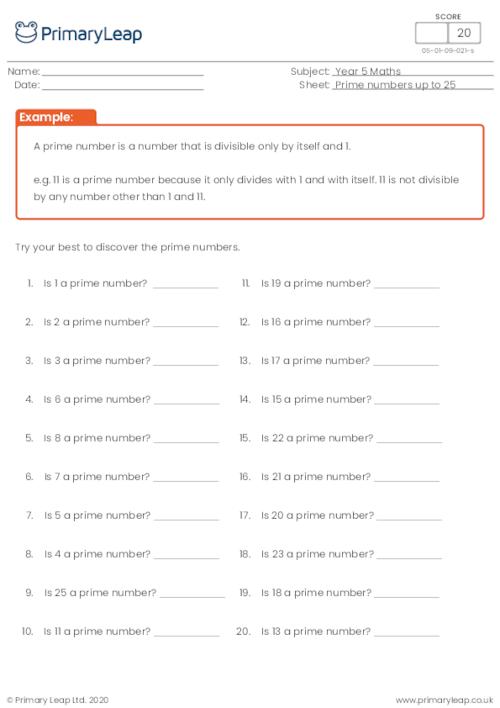
Students learn what a prime number is and recognise prime numbers up to 25.
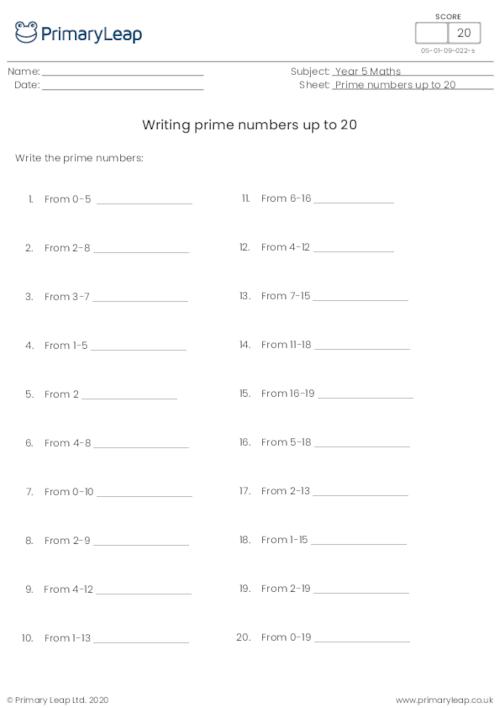
Students practise writing the prime numbers up to 20.
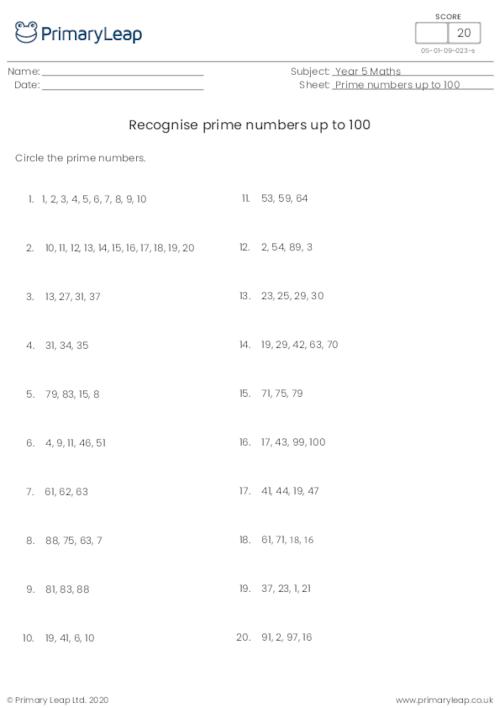
Students circle the prime numbers up to 100.
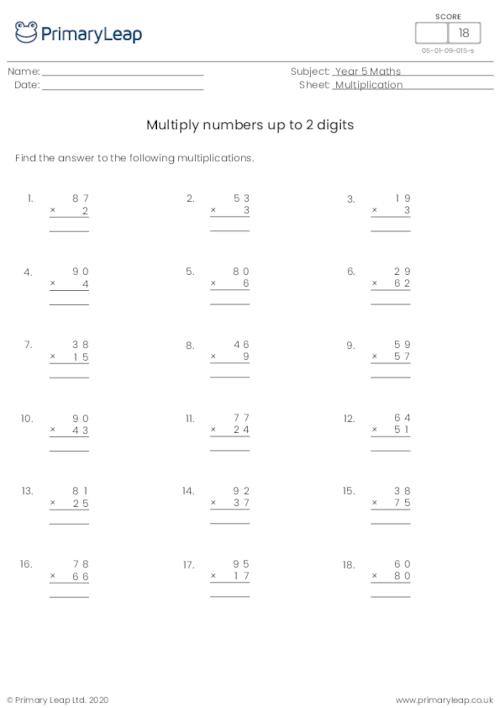
Students practise multiplying numbers up to 2 digits.
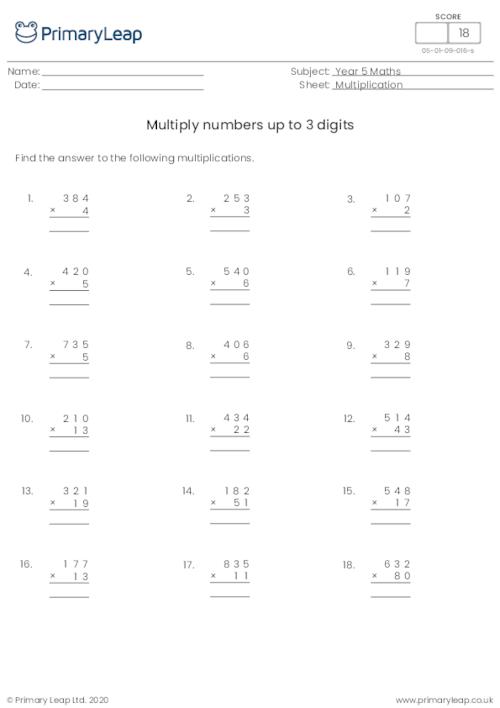
Students practise multiplying 3 digit numbers by a 1 or 2 digit number.
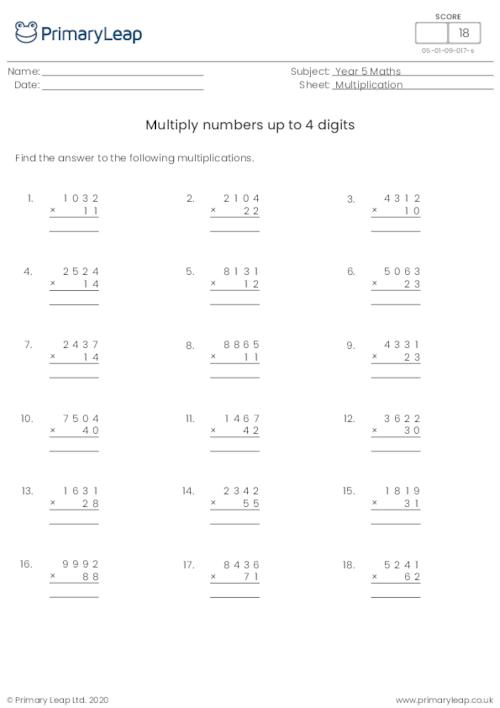
Students are asked to multiply 4 digit numbers by a one or two-digit number.
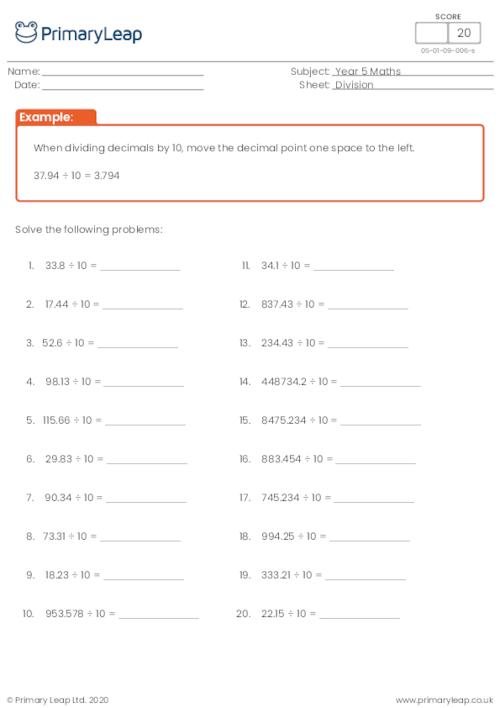
When dividing decimals by 10, move the decimal point one space to the left. Students practise dividing decimal numbers by 10.

When dividing decimals by 100, move the decimal point two spaces to the left. Students practise dividing decimals by 100.
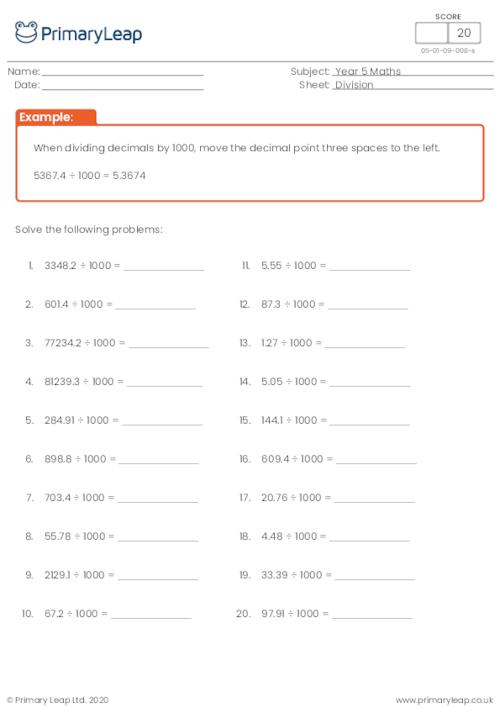
When dividing decimals by 1000, move the decimal point three spaces to the left. Students practise dividing decimals by 1000.
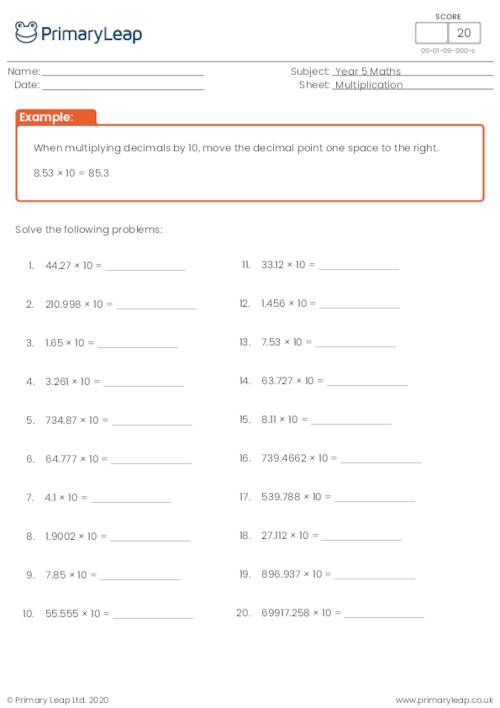
When multiplying decimals by 10, move the decimal point one space to the right. Students are asked to multiply decimal numbers by 10.
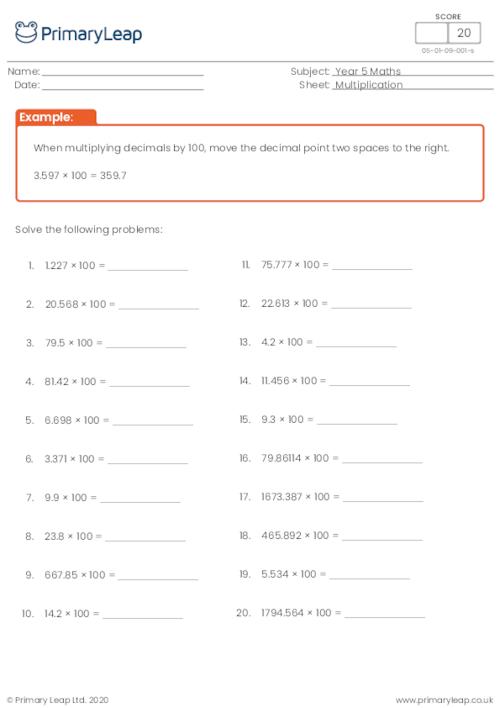
When multiplying decimals by 100, move the decimal point two spaces to the right. Students practise multiplying decimal numbers by 100.
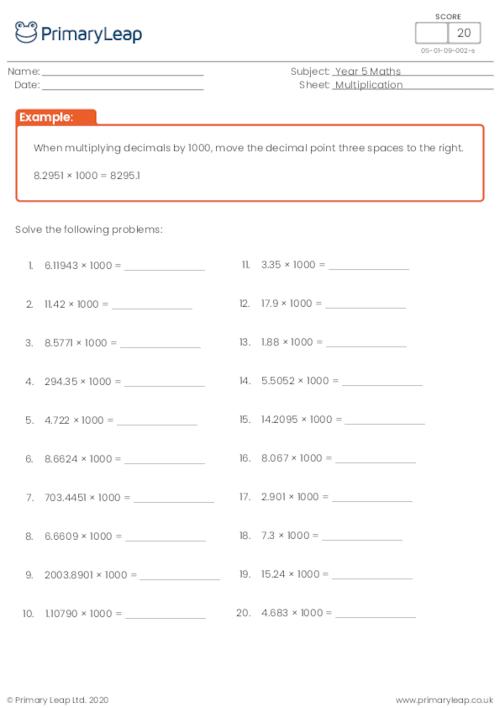
When multiplying decimals by 1000, move the decimal point three spaces to the right. Students practise multiplying decimals by 1000.
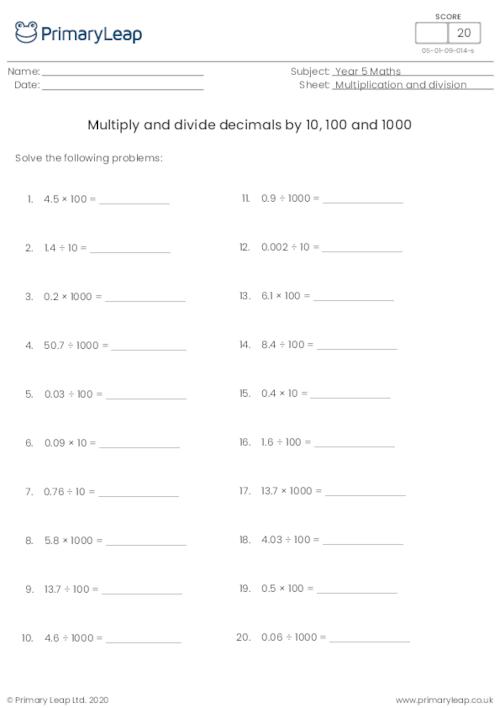
Students practise multiplying and dividing harder decimal numbers by 10, 100 and 1000.
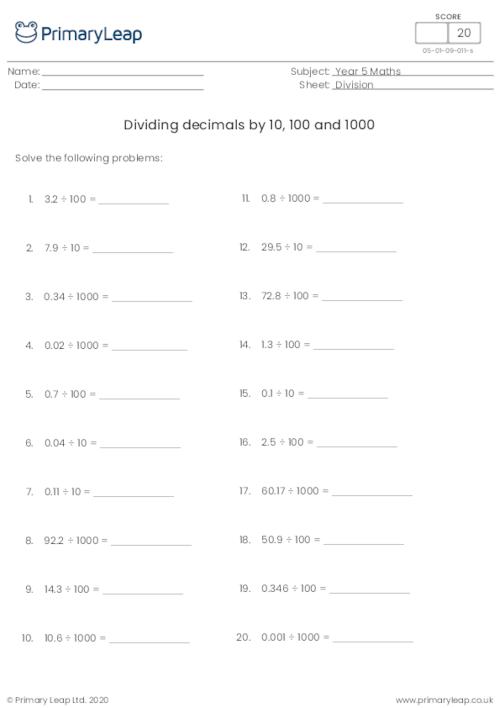
Students practise dividing harder decimal numbers by 10, 100 and 1000.
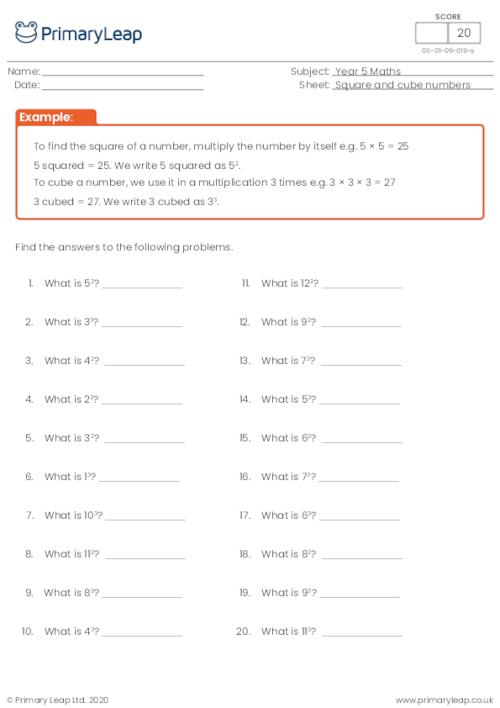
Students practise finding the square of a number and the cube of a number.
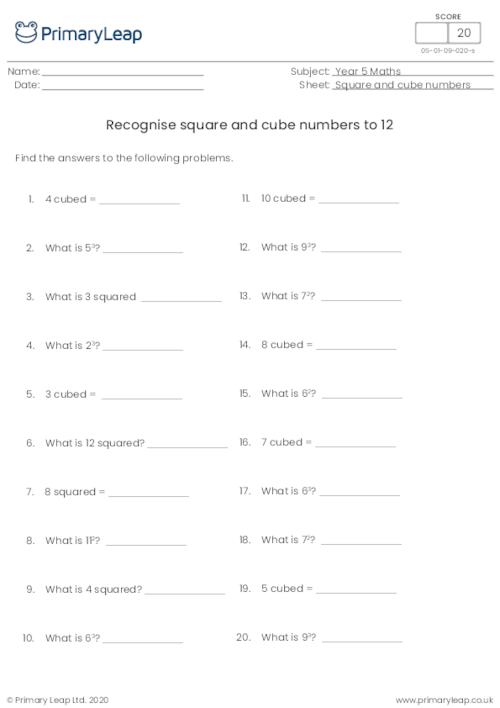
Students practise finding the square of a number and the cube of a number without an example.
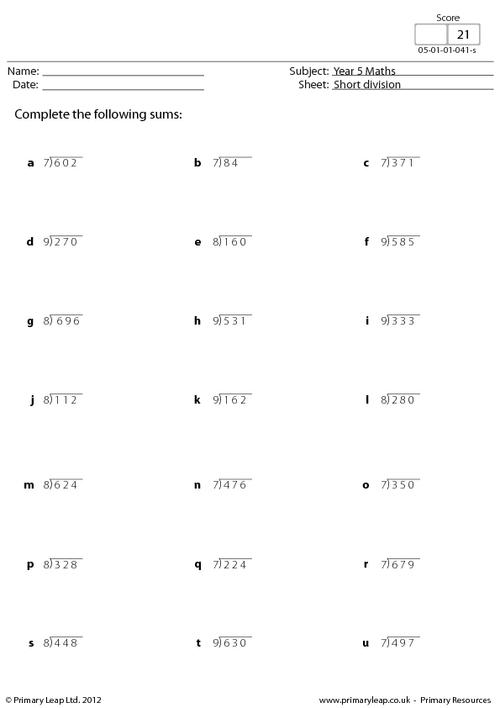
Math: Division - Solve the division facts with 7s, 8s and 9s/no remainders.
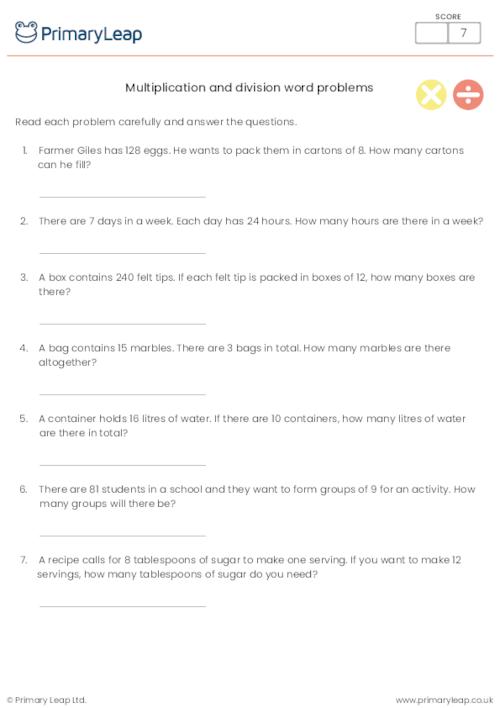
Multiplication and division word problemsThis KS2 maths resource will help students to solve multiplication and division word problems. Students read each question carefully, identify the operations i...

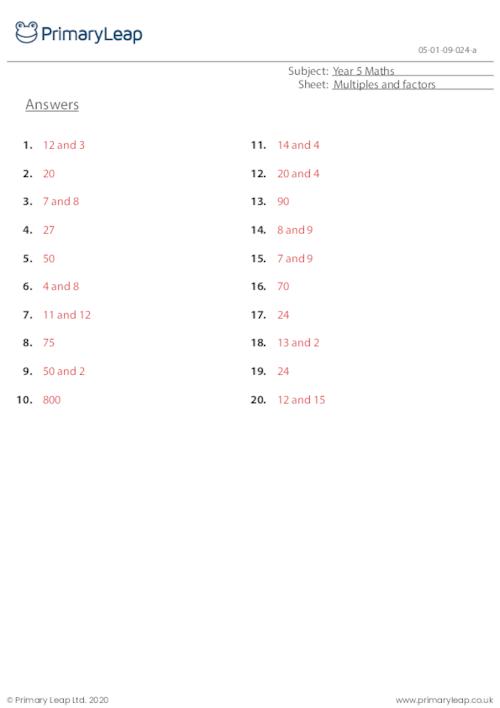
Students identify the multiples and factors of each number sentence.
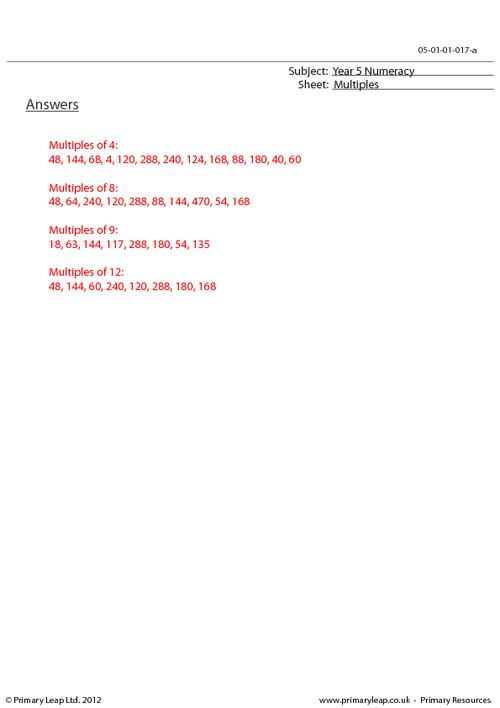
Maths: Multiples - Separate the various multiples and put them in the correct box.

Students are asked to find all the factor pairs of a number.
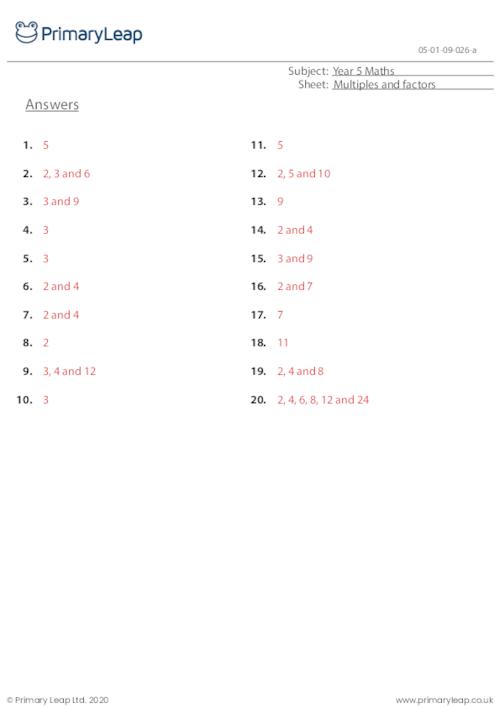
Students are asked to find the common factors of two numbers.
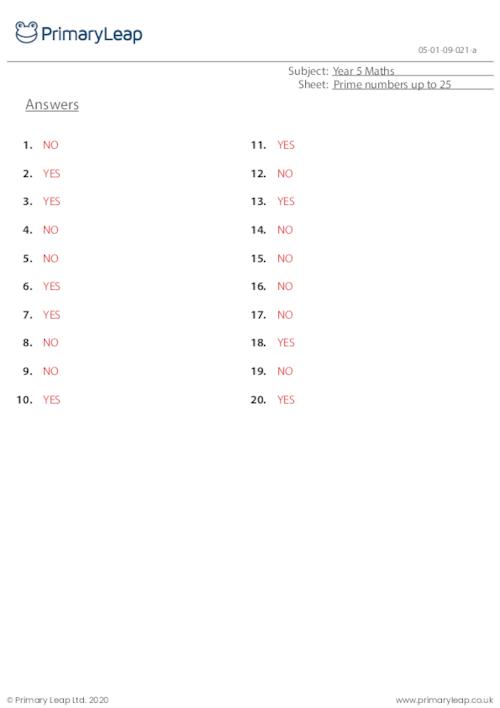
Students learn what a prime number is and recognise prime numbers up to 25.
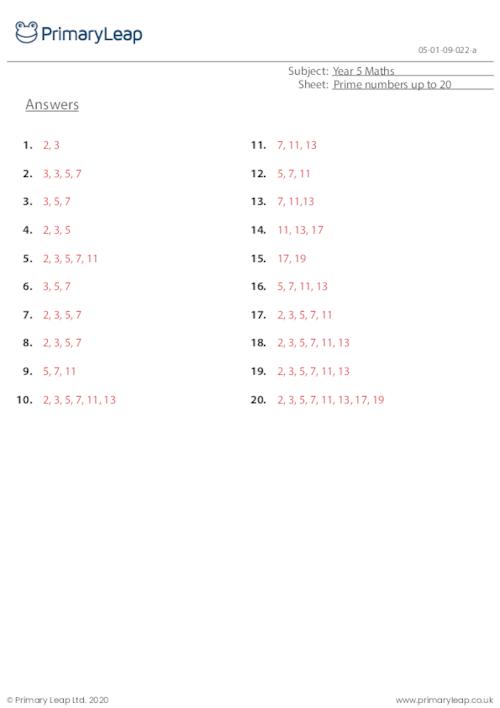
Students practise writing the prime numbers up to 20.
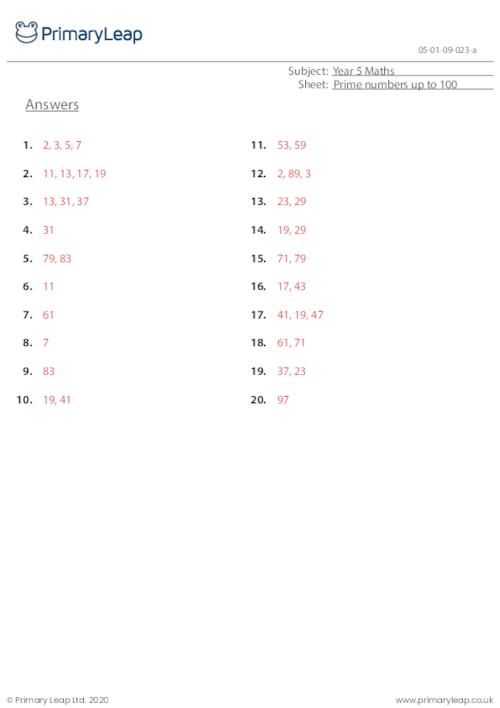
Students circle the prime numbers up to 100.
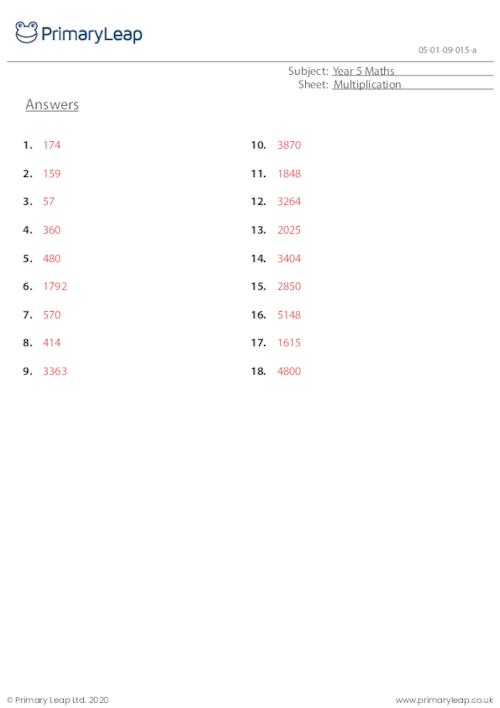
Students practise multiplying numbers up to 2 digits.
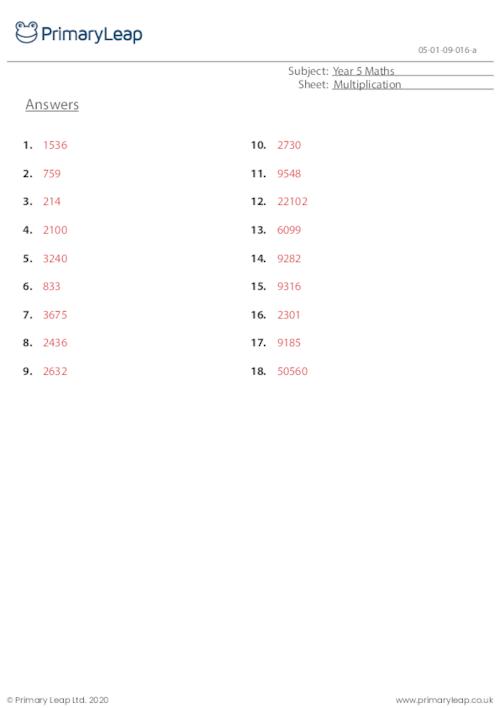
Students practise multiplying 3 digit numbers by a 1 or 2 digit number.
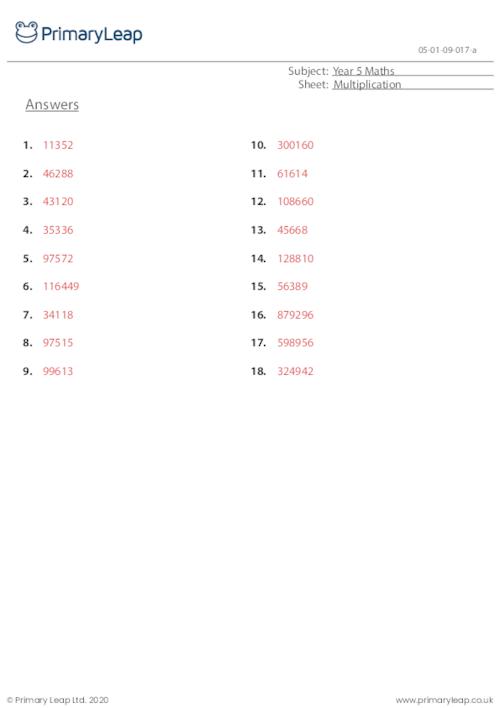
Students are asked to multiply 4 digit numbers by a one or two-digit number.
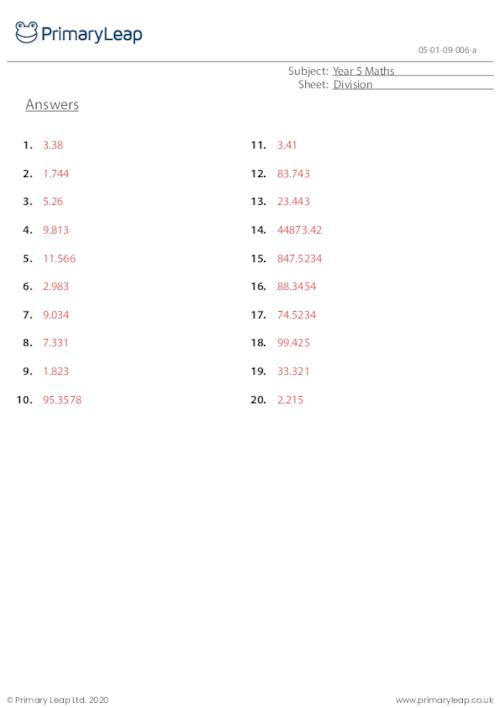
When dividing decimals by 10, move the decimal point one space to the left. Students practise dividing decimal numbers by 10.
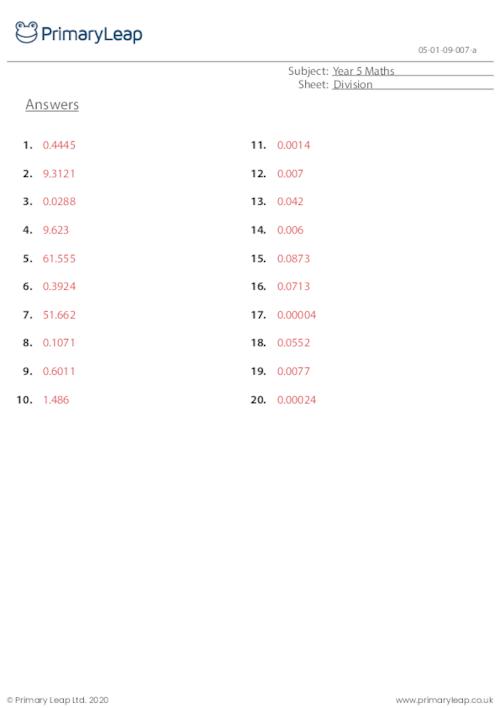
When dividing decimals by 100, move the decimal point two spaces to the left. Students practise dividing decimals by 100.
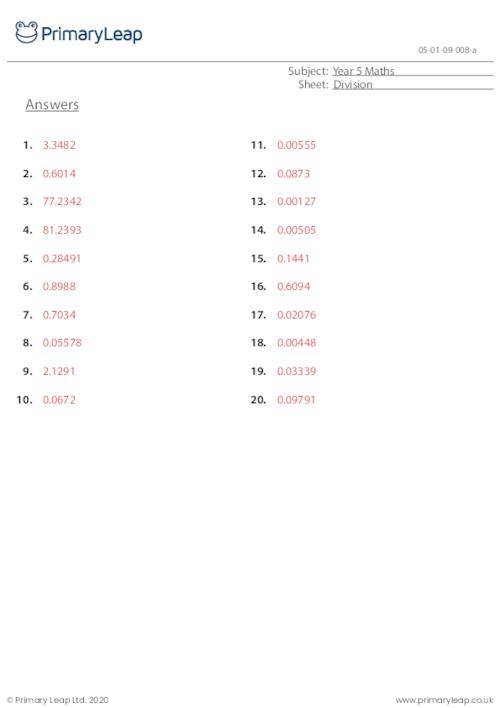
When dividing decimals by 1000, move the decimal point three spaces to the left. Students practise dividing decimals by 1000.
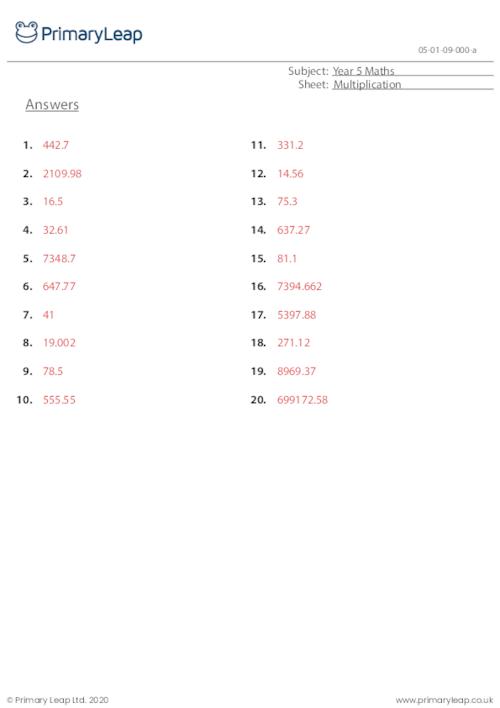
When multiplying decimals by 10, move the decimal point one space to the right. Students are asked to multiply decimal numbers by 10.
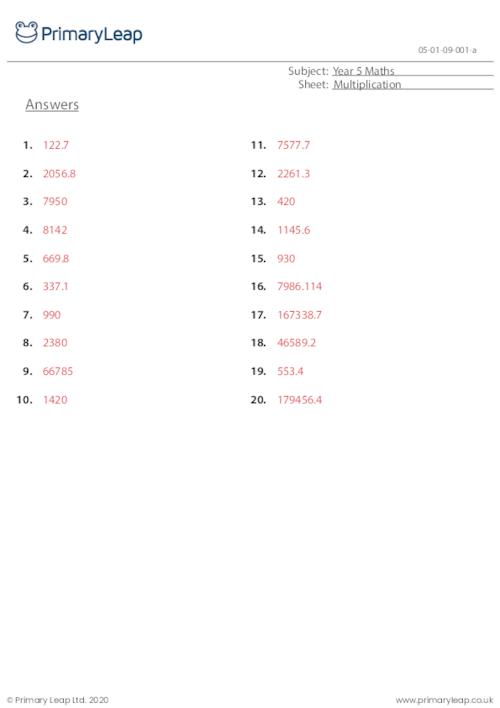
When multiplying decimals by 100, move the decimal point two spaces to the right. Students practise multiplying decimal numbers by 100.
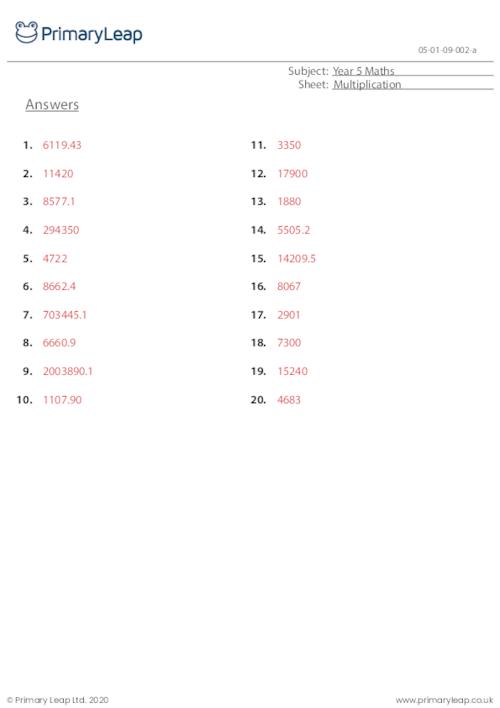
When multiplying decimals by 1000, move the decimal point three spaces to the right. Students practise multiplying decimals by 1000.
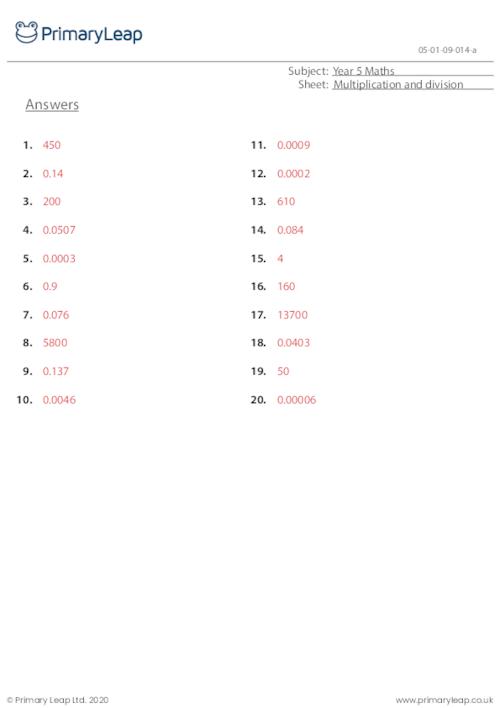
Students practise multiplying and dividing harder decimal numbers by 10, 100 and 1000.
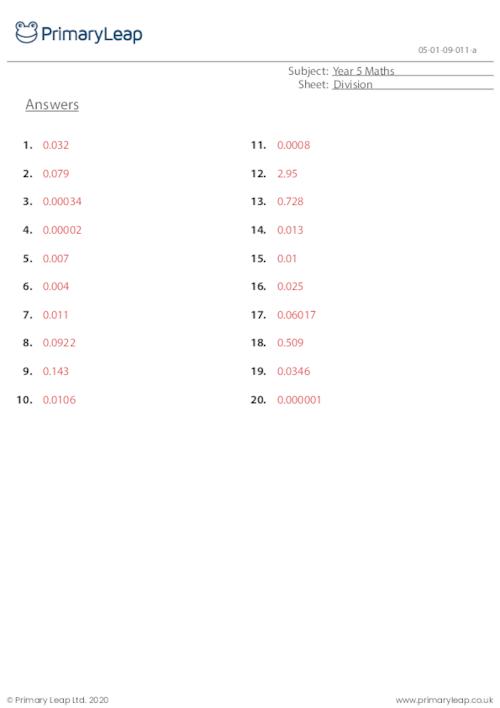
Students practise dividing harder decimal numbers by 10, 100 and 1000.

Students practise finding the square of a number and the cube of a number.
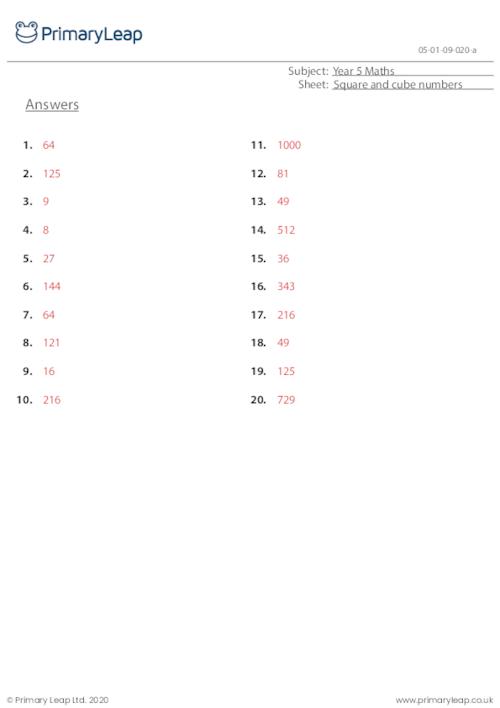
Students practise finding the square of a number and the cube of a number without an example.

Math: Division - Solve the division facts with 7s, 8s and 9s/no remainders.
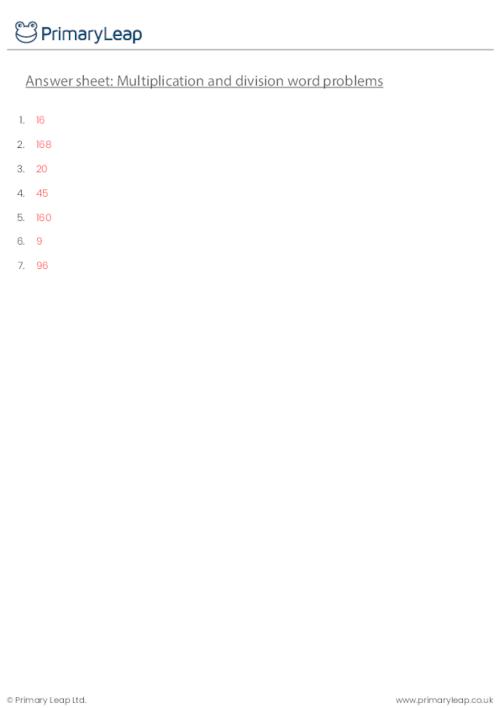
Multiplication and division word problemsThis KS2 maths resource will help students to solve multiplication and division word problems. Students read each question carefully, identify the operations i...

Prepare your Year 5 students for mathematical mastery with our "Multiplication and Division" workbook. Engaging subtopics such as identifying multiples and factors, prime numbers, decimal operations, and recognizing square and cube numbers make learning enjoyable. This comprehensive resource includes activities that help students grasp key concepts, from multiplying two-digit to four-digit numbers to mastering decimal operations. It's an invaluable tool for educators looking to enhance their math curriculum. With a focus on building strong foundations and problem-solving skills, this workbook equips students for mathematical success. Ideal for classroom use, it provides a structured and fun approach to mathematics, fostering a deeper understanding of multiplication and division.
An email has been sent to your account please activate your account to continue.

PrimaryLeap has introduced a new interactive learning platform and would like to offer you a completely Free Upgrade.
We understand that you may only want to use our services for worksheets and may not want to upgrade your account.
But if you are interested in trying out our new services then you're just a click away.
An email has been sent to your account please activate your account to continue.

An email has been sent to your account please activate your account to continue.

You've answered
and have 2 Questions remaining
Import multiple students information through a CSV File. Browse or drag .CSV file below.